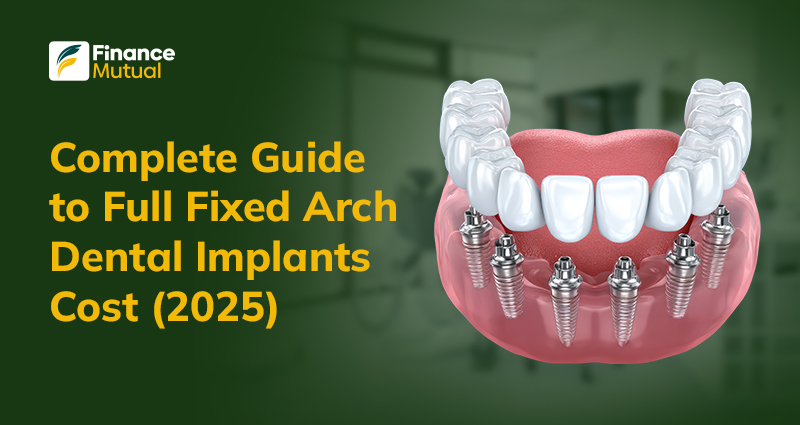
Wisdom teeth tend to make an entrance when you least want them to, usually just as you’re getting used to adulthood. And more often than not, they bring trouble. It is estimated that more than 70% of adults have at least one impacted wisdom tooth. Whether they’re pushing other teeth out of place, growing in at odd angles, or simply causing discomfort, extraction is often the best way to prevent further dental issues.
While the procedure itself is usually quick, the recovery process is just as important, if not more so. Taking care of your mouth properly afterward can make all the difference in how fast you heal and how comfortable (or uncomfortable) that healing process is.
Below, you’ll find practical, easy-to-follow tips to speed up your recovery, manage discomfort, and avoid common complications like dry socket or infection. Whether you're on Day 2 or Day 7, you'll know exactly what to do and what not to.
How to Speed Up Wisdom Teeth Recovery?
1. Follow your dentist’s advice
Yes, listen to your dentist’s instructions; they’ll help you avoid painful setbacks, such as dry socket.
2. Take your meds on time
Don’t wait for the pain to hit. Stay ahead of it and let your body focus on healing.
3. Cold first, warm later
Ice packs for the first 2 days, then switch to warm compresses to boost circulation and recovery.
4. Stay hydrated (no straws!)
Water = good. Straws = bad. Suction can mess with healing, so sip straight from the cup.

Before You Choose Braces, Don’t Miss These Color Ideas!
How to Sleep After Tooth Extraction?
♦ Elevate Your Head While Sleeping
During the first 2–3 nights, keep your head slightly raised using an extra pillow or by sleeping in a recliner. Elevation helps reduce swelling and prevents excess blood from pooling at the extraction site.
♦ Avoid Pressure on the Healing Side
Avoid sleeping on the side where the tooth was extracted. Instead, lie on your back or the opposite side to protect the area and avoid unnecessary irritation.
♦ Remove Gauze Before Bedtime
Gauze should not be left in your mouth while sleeping, as it can be a choking hazard. Only use it as directed and take it out once bleeding has slowed.
♦ Manage Discomfort Before You Sleep
Take any prescribed or over-the-counter pain medication before bed to stay ahead of the pain and ensure a more restful night’s sleep.
GoodRx reports that the cost of wisdom teeth removal can range between $200 and $1,100 per tooth for those without insurance coverage.
Oral Hygiene Tips: How to Clean Wisdom Teeth Holes Safely
Taking care of your mouth after a wisdom tooth extraction is essential to ensure smooth healing and avoid potential issues like infection or dry socket. Here are some important hygiene practices to follow during recovery:
❖ Safely cleaning the extraction sites
In the initial days after your procedure, it’s important to keep the area clean without disturbing the healing tissue. Avoid using a toothbrush or floss near the surgical site. Instead, gently rinse your mouth with water after meals to help clear away any food particles.
❖ Start salt water rinse for wisdom teeth after 24 hours
After the first 24 hours, you may begin using a warm saltwater rinse to cleanse your mouth. Mix about half a teaspoon of salt into a glass of warm water, and use it to gently rinse your mouth several times a day, particularly after meals.
❖ Avoid vigorous rinsing or brushing near the extraction sites
Being too aggressive with your oral care can interfere with healing. Vigorous rinsing or brushing can dislodge the protective clot that forms at the extraction site, increasing the risk of pain or infection. Stick to soft brushing away from the surgical area and avoid any vigorous mouth movements.
Managing Swelling and Pain
Dealing with swelling and discomfort after getting your wisdom teeth out? Normal, but that doesn’t mean you have to tough it out without a plan. Here’s a guide to help you manage the healing process, especially around day three when things can feel a little more intense.
1. How to reduce swelling 3 days after wisdom teeth removal?
By the third day, the initial swelling may peak. If you've been using a cold compress for the first 48 hours, now’s the time to switch things up. Switch to using a warm compress by placing a warm (not hot) towel or heating pad on the outside of your cheek for 15 to 20 minutes at a time.
2. How long does your face stay swollen after wisdom teeth removal?
Swelling typically lasts between 3 to 5 days, with the worst of it usually showing up around day 2 or 3. Most people notice a gradual improvement after day 4, and by the end of the week, the puffiness tends to fade.
3. Home remedies for swollen face after tooth extraction
If you’re into home remedies, there are a few go-to options that can help:
- Salt water rinse: Start doing this after 24 hours. It keeps your mouth clean and helps reduce inflammation.
- Turmeric paste: Mix turmeric with a bit of water or coconut oil and apply it to the outside of your cheek. It’s anti-inflammatory and low-key soothing.
- Gentle massage: Gently massaging the swollen area, while avoiding the extraction site, can help improve fluid circulation and ease swelling.
Wisdom Teeth Removal Recovery: What Each Day Looks Like
To help you feel more prepared, here’s a breakdown of what typically happens day by day after your extraction.
| Day | What to Expect | Care Tips |
| Day 2 Wisdom Teeth Removal | Swelling peaks, and your face might feel puffy or sore. You’ll likely still be on pain meds. | Stick to cold compresses and soft foods only. |
| Day 4 Wisdom Teeth Removal | Swelling starts to go down. Discomfort is still there, but more manageable. | Switch to warm compresses. Keep rinsing with salt water and continue eating soft, lukewarm meals. |
| Day 6 Wisdom Teeth Removal | Most pain and swelling have improved significantly. You’re probably feeling more like yourself. | Switch to warm compresses. Keep rinsing with salt water and continue eating soft, lukewarm meals. |
| Day 7 Wisdom Teeth Removal | Nearly fully recovered. Swelling is minimal, and normal routines can slowly return. | Start brushing near the extraction site carefully. Ease back into a normal diet and stay hydrated. |
When to Call Your Dentist
Recovery should feel better with each passing day. But if something feels off, don’t ignore it; your body might be trying to tell you it needs a little help. Here’s when it’s worth calling your doctor:
- You’ve got a lingering fever or chills
- There's swelling that seems to be getting worse, not better
- You notice pus, a weird taste, or just feel really run down
- The pain is sharp, throbbing, and doesn’t ease up
- If bleeding hasn’t slowed down after several hours
- If parts of your mouth or face are still numb the next day
Worried About the Cost of Wisdom Teeth Removal?
Dental procedures can catch you off guard, especially when it comes to out-of-pocket expenses. That’s why many dental clinics now offer flexible payment plans through FinanceMutual, an AI-powered financing platform built to make care more accessible.
If your provider partners with FinanceMutual, you’ll be able to pay in manageable monthly payouts, so you can focus on recovery, not the bill.
Ask your dental provider if FinanceMutual’s payment solutions are available for your treatment.
Conclusion
Recovering from wisdom teeth removal takes a little patience and care, but small things, like following your dentist’s advice, managing discomfort early, and keeping up with gentle hygiene, can really make a difference. As the days go by, you’ll start to feel more like yourself.
And if the cost of care is holding you back, ask your provider about flexible payment options through FinanceMutual. Their AI-powered financing solutions make it easier to access the treatment you need, without added financial stress. Focus on healing. FinanceMutual can help with the rest.

FAQs
1. How Long Does It Take Wisdom Teeth Holes to Close?
It usually takes about 1 to 2 weeks for the gum tissue to heal, but the deeper tissues can take a few months to completely heal. You’ll feel better way before it’s closed, just keep it clean and follow your aftercare routine.
2. How to Sleep After Wisdom Tooth Extraction?
Prop yourself up with an extra pillow or sleep in a recliner for the first 3–5 nights. This helps reduce swelling and keeps pressure off the healing area. And skip sleeping on the side where the tooth was removed.
3. When to Use Heat After Wisdom Teeth Removal?
Use ice packs for the first 48 hours to keep swelling down. After that, switch to a warm compress (not hot!) to help with circulation and ease any lingering discomfort.
4. How to Clean Wisdom Teeth Holes Without Irritating?
For the first day, skip brushing near the site. After 24 hours, start using a gentle saltwater rinse (swish, don’t swirl aggressively). Stick to soft brushing away from the area and avoid poking around with anything.
5. What Is the Best Salt Water Rinse Method for Wisdom Teeth?
Mix half a teaspoon of salt in a glass of warm water. Gently swish it around your mouth for about 30 seconds, especially after meals. Do this 3–4 times a day to keep things clean and speed up healing.
6. How Long After Wisdom Teeth Removal Can I Use a Straw?
Wait for at least 7 days before sipping from a straw. Suction can pull the healing clot right out, and trust us, dry socket is not fun. Better to play it safe and sip from the cup for now.
7. How Long Do I Have to Sleep Elevated After Wisdom Teeth Removal?
For the first few nights (around 3 to 5), it’s a good idea to sleep with your head propped up, use extra pillows, or even sleep in a recliner. This helps keep swelling down and avoids extra pressure on your jaw.
8. What to Eat After Wisdom Teeth Removal on Day 2?
By the second day, your mouth is still healing and probably a bit swollen. This means you’ll want to stick to soft, mild foods that are easy to swallow and gentle on the area. Cool or room-temperature meals are ideal. Some safe picks include:
- Plain applesauce
- Creamy mashed potatoes
- Smooth yogurt
- Soft smoothies
- Pudding or soft desserts
- Pureed or blended soups (make sure they’re not too hot)
Skip anything that’s hot, spicy, crunchy, or needs chewing.




